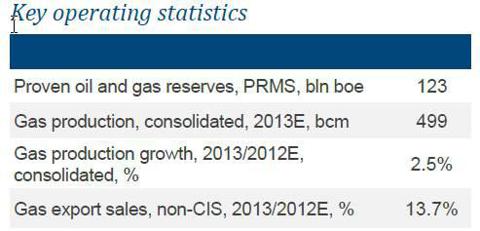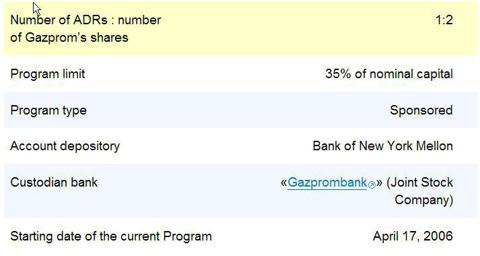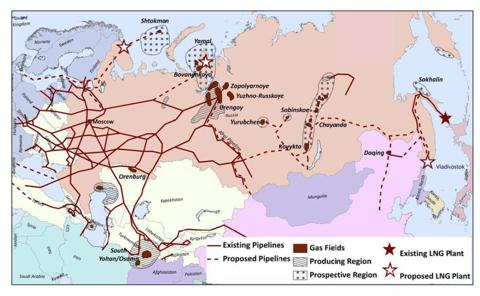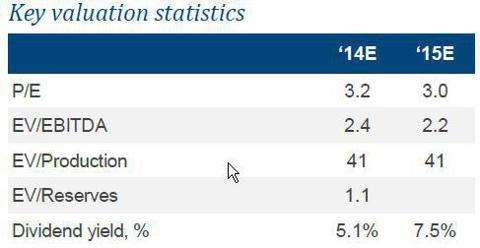This was published in 2012
http://www.zacks.com/stock/news/86015/Guide-to-The-10-Most-Popular-Leveraged-ETFs
Over the past decade, Exchange Traded Funds (ETFs) have gained tremendous popularity due to many advantages and flexibility that they offer investors. Some of the factors point to tax efficiency when compared to mutual funds, cost effectiveness and transparency as well as entry and exit flexibility.
Clearly investors have embraced these factors as total ETF industry assets currently stands at $1.3 trillion after 34% year on year growth as of 30thSeptember 2012 (as published by the ETF Industry Association).
The beauty of these products is that they allow investors to express their views about a particular asset class/economy/industry in the most efficient and cost effective manner, without the worries of a single company blowing up the return. Nevertheless, with over 1,400 products available in the market today, investors are more paralyzed by choice than anything (see Q3 ETF Asset Report: Investors Back in the Market?).
At this point, knowing one’s investment objective, time horizon and risk tolerance becomes top priority. At the same time, knowledge about individual products that they are investing in and their workings also become extremely important.
Most often investors fail to understand the inner workings of certain products that they invest in (especially the complex ones) and end up losing a great deal. For example, leveraged and inverse ETFs can certainly be great money making avenues for day traders or for a very short period of time. However, investors seeking to make money from these instruments by employing a traditional ‘buy and hold’ strategy are seem likely to lose over time (read Three Biggest Mistakes of ETF Investing).
Leveraged ETFs in Focus
Traditionally, leveraged funds provide 2x or 3x the return of the benchmark performance. For example, a fund that provides 2x the exposure will rise by 2% if the benchmark rises by 1%, however, the flip side also holds true. If the index falls by 1%, the ETF will lose 2%.
On the other hand an inverse leveraged ETF bets against the positive movement of the underlying index, usually over a single day. Basically most of these products rebalance at the end of every session and are built to only give investors the corresponding amount of leverage over a single trading period.
This works really well over a short period of time, where the actual compounded positive returns of the fund exceed the standard compounded returns of the index. However, during oscillating markets marked with periods of high volatility, this phenomenon can hurt the investor leading to larger losses than what some investors might initially expect (read Leveraged and Inverse ETFs: Suitable Only For Short Term Trading).
Therefore, in order for the investors to profit from these highly complex instruments it is prudent for them to understand 1) What actually is the product betting on?, 2) How does it plan to achieve returns 2x/3X the index?, 3) How often does it trade on a daily basis in order to ensure tight bid ask spreads?
This last factor, high trading volume which often leads to tight bid ask spreads, is very important for investors seeking to achieve the best price for their trade. For this reason, and given how volatile the leveraged market can be, obtaining a good price can be vital for overall returns.
In the light of the above statement, we have highlighted 10 of the most popular (i.e. with maximum average daily volume) leveraged ETFs that are available to investors.
The following table summarizes the key attributes that are prudent for any investor to consider before investing in these leveraged ETFs. While we have briefly described some of the key attributes of each below the table:
Table 1
ETF
|
Total Assets
|
Average Daily Volume
|
Expense Ratio
|
Leverage Factor
|
Index/Underlying
|
$618.41 million
|
10.97 million
|
0.95%
|
3X
|
Russell 2000 Index
| |
$1.57 billion
|
7.07 million
|
0.92%
|
2x
|
S&P 500 Index
| |
$1.13 billion
|
5.97 million
|
0.95%
|
3x
|
Russell 1000 Financial Services Index
| |
$608.19 million
|
3.72 million
|
0.95%
|
2x
|
NASDAQ 100 Index
| |
$311.91 million
|
2.32 million
|
0.95%
|
3X
|
S&P 500 Index
| |
$255.05 million
|
1.55 million
|
0.95%
|
3X
|
Energy Select Sector Index
| |
$693.30 million
|
1.55 million
|
0.98%
|
2x
|
Russell 2000 Index
| |
$980.26 million
|
1.48 million
|
0.95%
|
2x
|
Silver Bullion
| |
$215.82 million
|
518,000
|
0.95%
|
2x
|
Dow Jones Industrial Average Index
| |
$19.81 million
|
476,000
|
0.95%
|
2X
|
Barclays Capital U.S. 7-10 Year Treasury Index
|
For investors seeking for a leveraged play on the broad market via large cap basket we have highlighted four products. The ProShares Ultra S&P500 ETF , ProShares Ultra QQQ ETF , ProShares UltraPro S&P500 ETF and ProShares Ultra Dow30 ETF are some of the large cap leveraged ETF which are most liquid.
As is evident from the table above, SSO and UPRO both track the S&P 500 Index. The former seeks investment results that correspond to twice the daily returns of the index whereas the latter seeks to provide 3x the returns of the S&P 500.
Despite having different investment objectives, both of these ETFs charge the same expense ratio of 95 basis points. Both these ETFs use swap contracts to achieve the leverage that they strive for.
It is also very important to note that both of these ETFs are rebalanced at the end of day, therefore generally on intraday basis the ETF returns will not be equal to stated objective of 2x or 3x the index returns (see more in the Zacks ETF Center).
Thankfully, the ETFs provide the cushion of high traded volume and a substantial amount of popularity. SSO has an asset base of $1.57 billion coupled with an average daily volume of 7.07 million shares. On the other hand, UPRO has attracted $311.91 million in its asset base with an average daily volume of 2.32 million shares.
The ProShares Ultra Dow30 ETF (DDM) is the appropriate choice for investors seeking for a leveraged play on the Dow Jones Industrial Average Index. The Dow is by far one of the oldest stock indexes in the world. Its components are price weighted and it consists of only 30 large cap stocks (read Inside the Dow Jones Industrial Average ETF (DIA)).
The ETF has been able to amass $214.96 million in its asset base since its inception back in June of 2006. DDM is rebalanced on a daily basis and provides exposure of 2x the daily returns of the Dow Jones Industrial Average Index. It uses a variety of Index swaps to achieve its stated leverage.
The ETF has an average daily volume of about 518,000 shares and charges 95 basis points in fees and expenses.
Launched in June of 2006, the ProShares Ultra QQQ ETF (QLD) seeks to provide 2x the daily returns of the Nasdaq100 Index. The NASDAQ 100 index includes the largest non financial companies from the U.S. as well as abroad.
The ETF has a fairly large asset base of $608.19 million and charges 0.95% as expense ratio. The ETF enters into swap contracts with different financial institutions to provide the leveraged exposure. QLD also has a very high average daily volume of around 3.72 million shares (see The Apple Effect and Nasdaq ETFs).
Having discussed some of the large cap leveraged ETFs, let’s now focus on a couple of small cap ones.
The Direxion Daily Small Cap Bull 3X Shares (TNA) and ProShares Ultra Russell2000 (UWM) are two ETFs which provide leveraged play on the Russell 2000 index.
The Index measures the performance of the small cap segment of the U.S. equity markets and is a subset of the Russell 3000 index. The benchmark is composed of 2000 stocks which make up roughly 10% of the total market capitalization of the Russell 3000 index.
TNA provides 3x leveraged exposure whereas UWM provides twice the daily returns of the Russell 2000 index. With an average daily volume within striking distance of 11 million shares, TNA is by far the most heavily traded leveraged ETF available in the market. The ETF also exhibits popularity as indicated by its asset base of $618.41 million (see Three Small Cap ETFs with Impressive Yields).
On the other hand, UWM also enjoys a high average daily volume of more than a million shares and has been able to amass around $694 million since its inception in January of 2007.
Also, both of these ETFs utilize index swaps to provide the stated leverage. TNA charges an expense ratio of 95 basis points; however, UWM is slightly more expensive than TNA charging 0.98%.
The financial sector has been one of the top performing sectors this year. It has been pretty much leading the market rally so far this year after a disastrous performance last fiscal year.
The Direxion Daily Financial Bull 3X Shares (FAS) is an ETF that provides a leveraged play on the financial sector. It seeks investment returns that correspond to 3x the daily returns of the Russell 1000 Financial Services Index.
The index includes stocks of financial services companies from the entire spectrum of market capitalization (read Inside The Top Zacks Ranked Financial ETF). With an asset base of $1.13 billion, FAS is one of the most popular leveraged financial equity ETFs. It charges investors 0.95% as expenses, and on an average does about 5.97 million shares daily.
The Direxion Daily Energy Bull 3X Shares (ERX) provides a leveraged exposure on the energy sector. It strives for 3x the daily returns of the Energy Select Sector Index, which measures the performance of companies from the oil and gas, consumable fuels, oil and gas equipments and services etc.
ERX aims for the leverage by entering into index swap contracts with different financial institutions. It charges an expense ratio of 95 basis points and does about 1.55 million shares daily in volume. It has an asset base of $255.05 million (read Uncertain about the Economy? Try Market Neutral ETFs).
The ProShares Ultra Silver ETF (AGQ) seeks 2x the daily returns of silver bullions which are U.S Dollar denominated for London delivery. This means that along with the volatility in the individual commodity price, the ETF will also be subject to currency exchange rate between the U.S Dollars and the Pound Sterling.
Obviously being a leveraged ETF the fund takes long positions derivative instrument like silver futures and enters into silver forward contracts with different financial institutions to gain leverage on the underlying asset class (i.e. silver bullion).
The ETF is also rebalanced daily and charges investors 95 basis points in fees and expenses. AGQ has a fairly large asset base of $980.26 million and an average daily volume of about 1.48 million shares.
ProShares Ultra 7-10 Year Treasury (UST) is a daily rebalanced leveraged long ETF which is designed to generate 2x the daily returns of the Barclays Capital U.S. 7-10 Year Treasury Index. The index measures the performance of intermediate term Treasury bonds which have a residual maturity ranging from 7 to 10 years.
Most fixed income ETFs, especially long dated Treasury bonds, have seen tremendous rally in the recent past mainly thanks to the risk aversion of investors fuelled by the Eurozone debt crisis and concerns over global economic slowdown. The Federal Reserve’s ultra low interest rate policy is also responsible for attracting investor appetite towards these instruments.
However, from the third quarter onwards, investors have started to show interest in the ETFs from riskier asset classes and high yield bond ETFs for higher current income thereby reducing the demand for the lower yielding Treasury bonds.
This has caused massive asset outflows from the Treasury Bond ETFs and negatively impacted the intermediate and longer dated Treasury Bond ETFs within this time frame (read Long Term Treasury ETFs: Ultimate QE3 Play?).
Nevertheless, this seems to be a short term phenomenon as it is quite evident from the Fed’s actions (such as Operation Twist) that the low interest rate scenario, especially in the Treasury bond front, is most likely to remain for quite some time.
Investors could go for a magnified exposure to the 7 – 10 year Treasury bond segment should consider UST for short term trades. The product has around $20 million in its asset base and on an average does a good daily volume of around 476,000 shares. It charges an expense ratio of 95 basis points.





